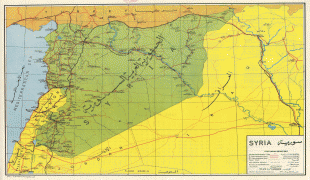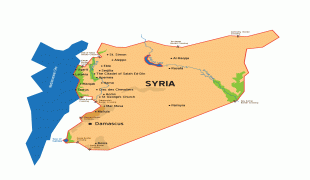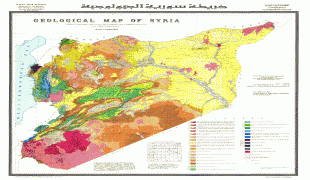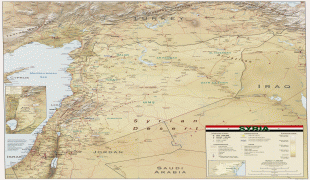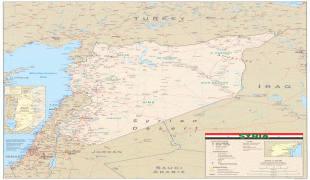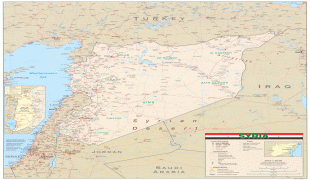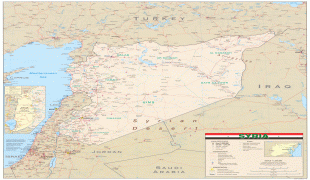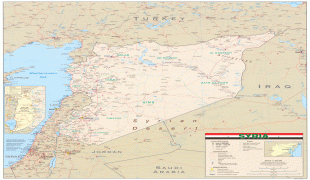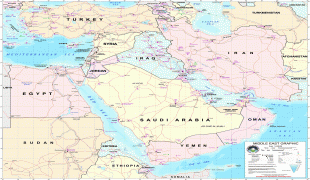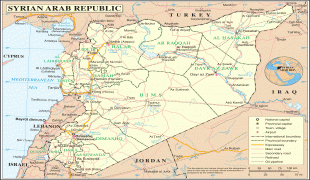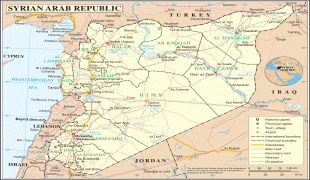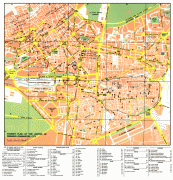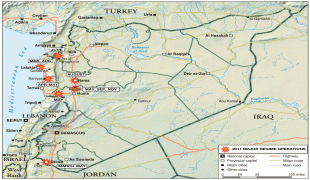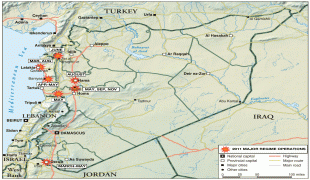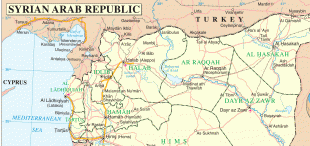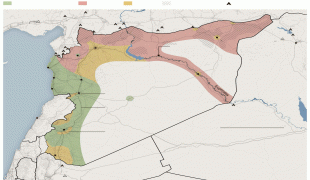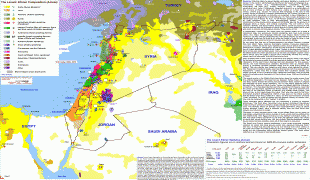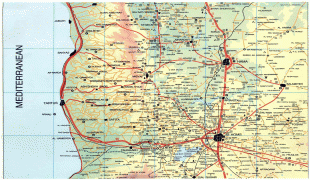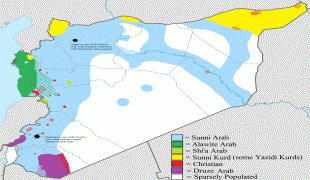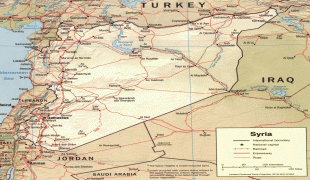Syria (Syrian Arab Republic)
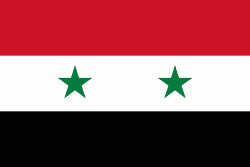 |
 |
| Flag of Syria | |
The name "Syria" historically referred to a wider region, broadly synonymous with the Levant, and known in Arabic as al-Sham. The modern state encompasses the sites of several ancient kingdoms and empires, including the Eblan civilization of the 3rd millennium BC. Aleppo and the capital city Damascus are among the oldest continuously inhabited cities in the world. In the Islamic era, Damascus was the seat of the Umayyad Caliphate and a provincial capital of the Mamluk Sultanate in Egypt. The modern Syrian state was established in the mid-20th century after centuries of Ottoman rule. After a period as a French mandate (1923–1946), the newly-created state represented the largest Arab state to emerge from the formerly Ottoman-ruled Syrian provinces. It gained de jure independence as a democratic parliamentary republic on 24 October 1945 when the Republic of Syria became a founding member of the United Nations, an act which legally ended the former French mandate (although French troops did not leave the country until April 1946).
The post-independence period was tumultuous, with multiple military coups and coup attempts shaking the country between 1949 and 1971. In 1958, Syria entered a brief union with Egypt called the United Arab Republic, which was terminated by the 1961 Syrian coup d'état. The republic was renamed as the Arab Republic of Syria in late 1961 after the December 1 constitutional referendum of that year. A significant event was the 1963 coup d'état carried out by the military committee of the Arab Socialist Ba'ath Party which established a one-party state. It ran Syria under emergency law from 1963 to 2011, effectively suspending constitutional protections for citizens. Internal power-struggles within neo-Ba'athist factions caused further coups in 1966 and 1970, which eventually resulted in the seizure of power by General Hafez al-Assad. Assad assigned Alawite loyalists to key posts in the armed forces, bureaucracy, Mukhabarat and the ruling elite; effectively establishing an "Alawi minority rule" to consolidate power within his family.
After the death of Hafez al-Assad in 2000, his son Bashar al-Assad inherited the presidency and political system centered around a cult of personality to the al-Assad family. The Ba'ath regime has been condemned for numerous human rights abuses, including frequent executions of citizens and political prisoners, massive censorship and for financing a multi-billion dollar illicit drug trade. Following its violent suppression of the Arab Spring protests of the 2011 Syrian Revolution, the Syrian government was suspended from the Arab League in November 2011 and quit the Union for the Mediterranean the following month. Since July 2011, Syria has been embroiled in a multi-sided civil war, with the involvement of different countries. The Organisation of Islamic Cooperation suspended Syria in August 2012 citing "deep concern at the massacres and inhuman acts" perpetrated by forces loyal to Bashar al-Assad. As of 2020, three political entities – the Syrian Interim Government, Syrian Salvation Government, and Autonomous Administration of North and East Syria – have emerged in Syrian territory to challenge Assad's rule.
Syria was ranked last on the Global Peace Index from 2016 to 2018, making it the most violent country in the world due to the war. Syria is the most corrupt country in the MENA region and was ranked the second lowest globally on the 2022 Corruption Perceptions Index. The Syrian civil war has killed more than 570,000 people, with pro-Assad forces causing more than 90% of the total civilian casualties. The war led to the Syrian refugee crisis, with an estimated 7.6 million internally displaced people (July 2015 UNHCR figure) and over 5 million refugees (July 2017 registered by UNHCR), making population assessment difficult in recent years. The war has also worsened economic conditions, with more than 90% of the population living in poverty and 80% facing food insecurity.
Several sources indicate that the name Syria is derived from the 8th century BC Luwian term "Sura/i", and the derivative ancient Greek name: Σύριοι, ', or Σύροι, ', both of which originally derived from Aššūr (Assyria) in northern Mesopotamia (present-day Iraq). However, from the Seleucid Empire (323–150 BC), this term was also applied to The Levant, and from this point the Greeks applied the term without distinction between the Assyrians of Mesopotamia and Arameans of the Levant. Mainstream modern academic opinion strongly favors the argument that the Greek word is related to the cognate Ἀσσυρία, ', ultimately derived from the Akkadian '. The Greek name appears to correspond to Phoenician ʾšr "Assur", ʾšrym "Assyrians", recorded in the 8th century BC Çineköy inscription.
The area designated by the word has changed over time. Classically, Syria lies at the eastern end of the Mediterranean, between Arabia to the south and Asia Minor to the north, stretching inland to include parts of Iraq, and having an uncertain border to the northeast that Pliny the Elder describes as including, from west to east, Commagene, Sophene, and Adiabene.
By Pliny's time, however, this larger Syria had been divided into a number of provinces under the Roman Empire (but politically independent from each other): Judaea, later renamed Palaestina in AD 135 (the region corresponding to modern-day Israel, the Palestinian Territories, and Jordan) in the extreme southwest; Phoenice (established in AD 194) corresponding to modern Lebanon, Damascus and Homs regions; Coele-Syria (or "Hollow Syria") and south of the Eleutheris river.
Currency / Language
| ISO | Currency | Symbol | Significant figures |
|---|---|---|---|
| SYP | Syrian pound | £ or لس | 2 |
| ISO | Language |
|---|---|
| AR | Arabic language |
| HY | Armenian language |
| EN | English language |
| FR | French language |
| KU | Kurdish language |






